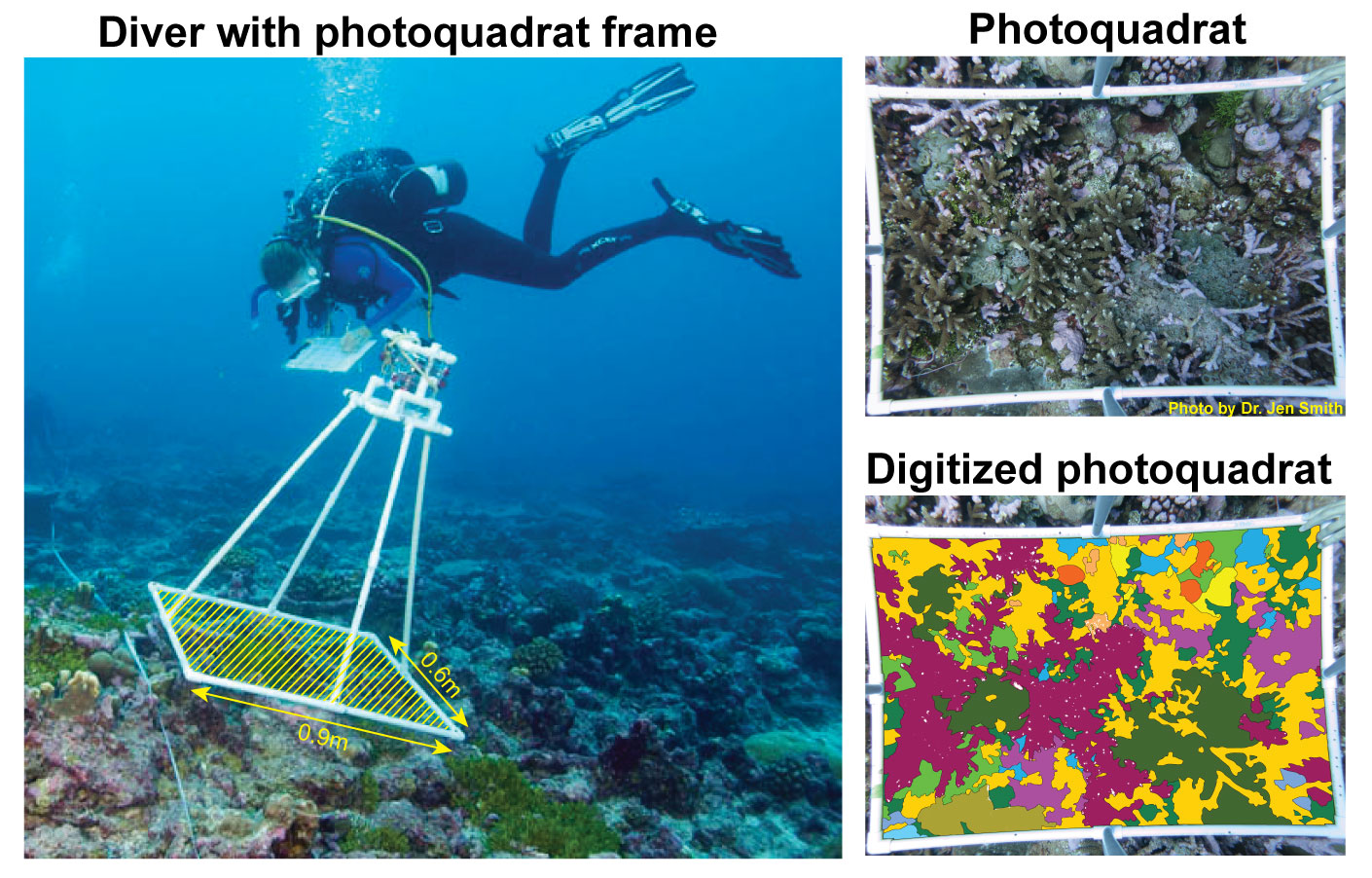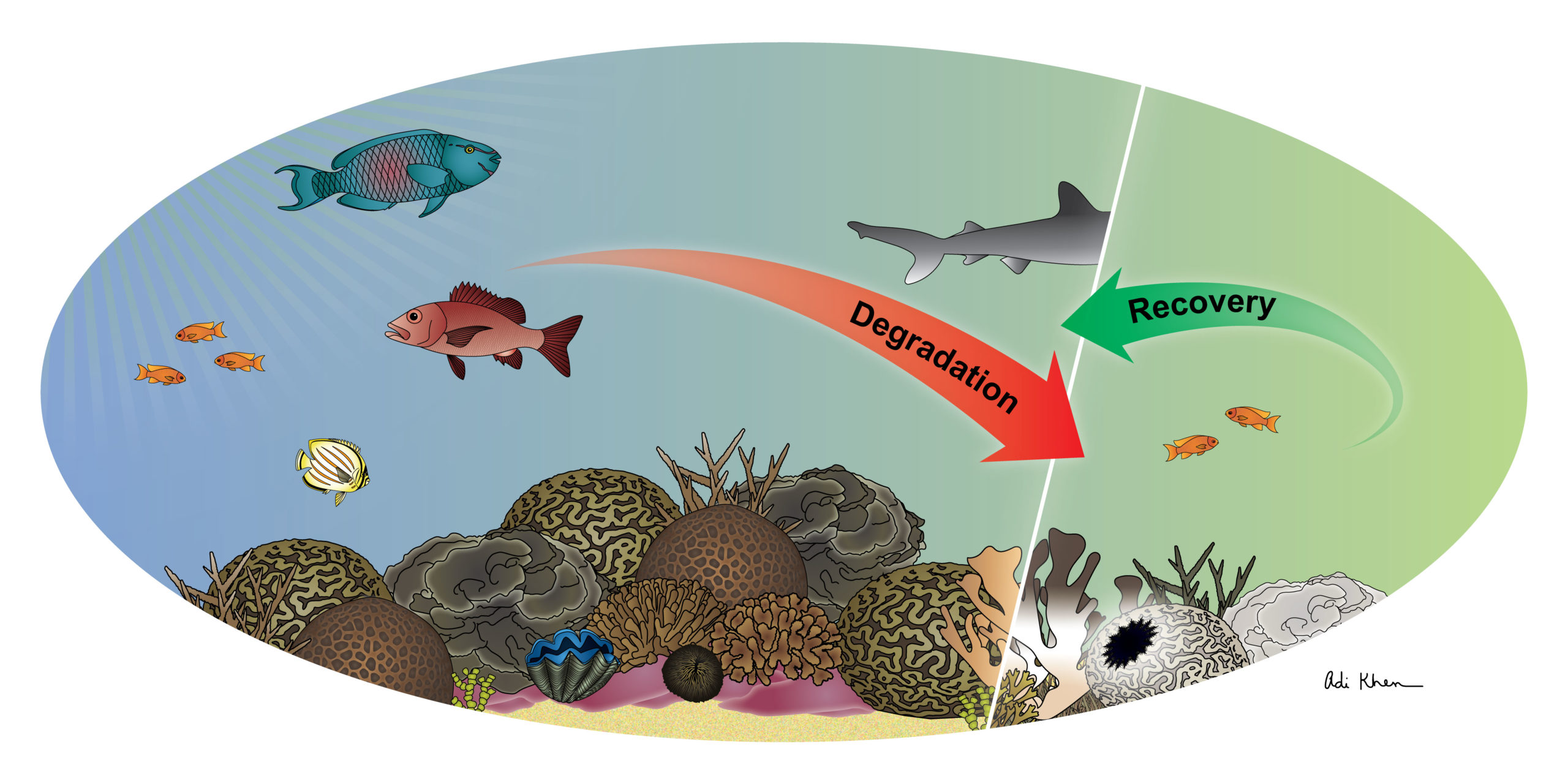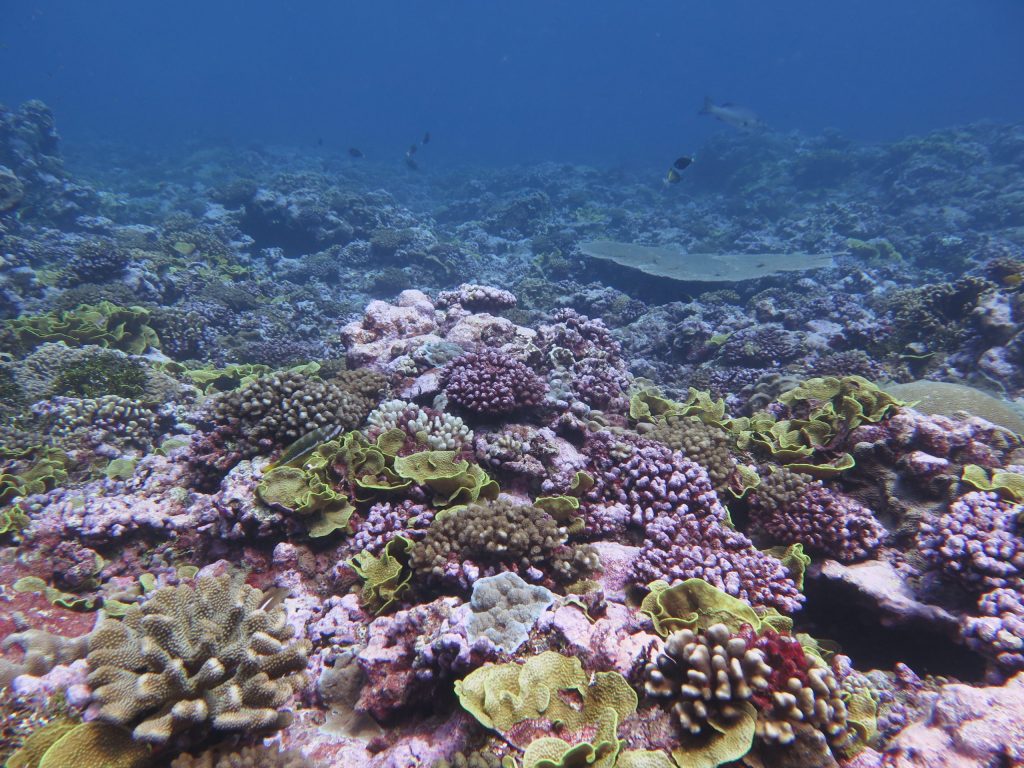In hopeful news for coral reefs, benthic communities at Palmyra Atoll in the Central Pacific show evidence of long-term stability, recovery and resilience, despite two bleaching events within the last decade.
The Gist
A new study published in Coral Reefs showcases promising results from analysis of a decade-long time series of images taken at multiple sites on Palmyra Atoll. While many studies have documented how corals respond to bleaching events, this is one of the few that evaluates how those responses play out over extended time periods, as well as how non-coral species respond to warming.
The good news: at Palmyra, 10 years of monitoring on the atoll’s coral reefs reveals remarkable stability, recovery and resilience despite El Niño-associated coral bleaching events.
“Not only does our time series demonstrate the importance of precise, long-term ecological monitoring,” said lead author Adi Khen of the Center for Marine Biodiversity and Conservation at the Scripps Institution of Oceanography. “We may be able to apply these baselines toward other, more human-impacted reefs at higher risks of decline.”
The Big Picture
Around the world, coral reefs are among climate change’s most vulnerable victims. Mass bleaching events caused by rising seawater temperatures are increasing in frequency and severity.
“Tackling climate change requires applied science on the global scale,” said Chad Wiggins, TNC’s Palmyra Program Director, “and by virtue of its location—within a National Wildlife Refuge that is further protected by the Pacific Remote Islands Marine National Monument—TNC’s Climate Adaptation + Resilience Lab at Palmyra Atoll is a center of island ecosystem research. It is one of the only marine environments that is spectacularly intact and also offers facilities to support experimental science on healthy coral reefs.”

As noted in the paper, this is vital because coral reef communities are highly dynamic and long-term monitoring is needed to tease apart natural mechanisms of change following large-scale disturbances.
“We are continuing to track Palmyra’s benthic communities through both small and large-scale imagery,” said Khen. “Next, we’ll be analyzing the species-specific responses of Palmyra’s common corals and algae in the context of temperature, as well as measuring the growth, bleaching, recovery, partial mortality, and regrowth trajectories of the same individual coral colonies over time.”
The Takeaway
Researchers note that it is still unclear whether the resistance and recovery observed at Palmyra are due to the lack of local human impacts, acclimation and/or adaptation, or the degree of thermal exposure relative to other locations. What is clear, is that Palmyra’s reefs represent a unique opportunity to better understand benthic community dynamics and successional trajectories in the face of global change.

This dataset is not only a testament to Palmyra’s resilience, but also a backdrop from which to consider the adaptation and acclimation potential of coral reef communities.
“Palmyra’s intact ecosystems are a place where nature can thrive,” said Khen. “The reefs here provide a valuable natural laboratory where we can study the effects of global stressors such as climate change without confounding effects of local stressors, like fishing or pollution. As we try to mitigate and adapt to the impacts of climate change, Palmyra’s reefs can serve as a window of hope.” In summary, studying the healthy ecosystems at Palmyra can help us better protect and restore ecosystems that aren’t as resilient.
References:
Khen, A., Johnson, M.D., Fox, M.D., Clements, S.M., Carter, A.L., Smith, J.E., "Decadal stability of coral reef benthic communities on Palmyra Atoll, central Pacific, through two bleaching events." Coral Reefs (2022). https://doi.org/10.1007/s00338-022-02271-6




Join the Discussion